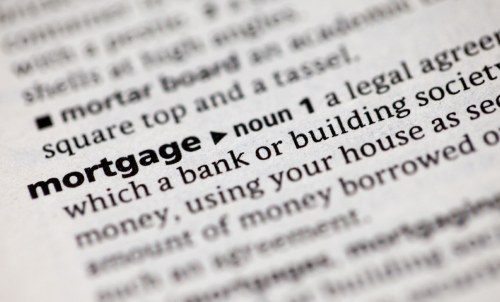
The UK property market offers investors a wide variety of opportunities, with different property types appealing to different buyers, renters and budgets. Whether you are considering residential property for buy-to-let purposes or adding to an existing portfolio, understanding property types is essential. Each type of property has its own benefits, drawbacks and investment potential. This guide explores the most common property types and explains what each could mean for investors.
1. Detached House
A detached house is a stand-alone property, not physically connected to any neighbouring building. This is often considered the most desirable type of home because of the privacy, space and often large garden that it provides.
Advantages
Greater privacy, larger living space, and typically more land and parking.
Considerations
Higher purchase price and maintenance costs. Rental yields may be lower compared to smaller properties, but capital appreciation may be higher.
Detached houses are particularly popular with families and long-term homeowners, making them stable investments for landlords.
2. Semi Detached House
A semi-detached house shares one wall with another property, while the other side is free-standing. These are among the most common property types, striking a balance between affordability and space.
Advantages
More affordable than detached homes, while still offering a decent garden and living space.
Considerations
Less privacy compared to detached houses. Noise transfer through the shared wall may affect tenant satisfaction.
Semi-detached houses appeal to families, young couples and first-time buyers, making them versatile in both the rental and sales markets.
3. Terraced House
A terraced house is part of a row of homes, sharing walls with properties on either side. These homes are very common in cities and towns, particularly Victorian and Edwardian terraces.
Advantages
Typically, lower purchase prices, strong rental demand in urban areas and efficient use of land.
Considerations
Limited outdoor space, less privacy and potential noise issues.
Terraced houses can offer excellent rental yields, especially in areas with high demand for affordable housing. For investors, they can be a cost-effective entry point into the market.
4. Bungalow House
A bungalow house is a single-storey property, popular with older residents due to its accessibility. While not as common as other property types, bungalows hold a unique position in the market.
Advantages
Accessibility for elderly or disabled residents on large plots of land.
Considerations
Limited number built each year, meaning high competition and strong resale potential.
Bungalows constitute a niche rental market and have strong long-term capital appreciation potential due to limited supply.
5. Flats and Apartments
Flats (also known as apartments) are self-contained units within larger buildings. They range from converted Victorian houses to purpose-built apartment blocks and high-rise developments.
Advantages
Lower entry prices, strong demand in city centres, and relatively easy to rent to young professionals and students.
Considerations
Remaining length of leaseholds, service charges, and potential issues with cladding and safety regulations.
For investors, flats can deliver strong yields, especially in cities where demand for rental accommodation is high.
6. Cottages
A cottage is often a traditional rural property which is relatively small but rich in character. Cottages are mostly found in countryside locations and are popular with buyers seeking charm and tranquillity.
Advantages
Strong appeal in rural and holiday let markets, especially with the rise of staycations.
Considerations
Older buildings can mean higher maintenance costs, potential planning restrictions and energy inefficiency compared to modern homes. Location can also limit year-round rental demand if the property is in a remote area.
For investors, cottages can be a strong niche opportunity, particularly in regions popular with tourists. However, they are better suited for long-term capital appreciation or short-term rental strategies rather than high-yield urban lets.
7. Maisonettes
A maisonette is a type of flat that usually spans two floors and has its own private entrance, making it feel more like a house than a traditional apartment. Maisonettes are often created by converting larger buildings or built as part of low-rise housing developments.
Advantages
Often more spacious than standard flats and with greater privacy due to their separate entrance. Appealing to families or tenants who want the affordability of a flat with some of the independence of a house.
Considerations
Resale values can sometimes be less predictable than houses or standard flats, as demand is more niche. Leasehold arrangements may still apply.
For investors, maisonettes provide a midpoint between flats and houses. They can achieve steady rental demand, especially from young families or professional sharers who want more space without the higher price tag of a semi-detached house.
Investment Considerations
When evaluating different property types, investors should weigh both short-term returns and long-term growth potential. Here are some of the main considerations:
Rental yield vs. capital growth
Certain properties, such as terraced houses or smaller flats, tend to generate higher rental yields because they are cheaper to buy and are always in demand. In contrast, detached houses or period properties may produce lower yields but offer stronger potential for long-term capital appreciation. Choosing between these depends on whether your priority is steady income or building equity over time.
Location and tenant demand
Property type interacts closely with location. For example, city centre flats are popular with young professionals and students, while family homes, such as semi-detached or detached houses, may attract long-term tenants in suburban or commuter areas. Understanding the tenant demographic in your chosen area helps to ensure fewer void periods and stable rental income.
Maintenance and running costs
Older properties such as cottages or terraced homes may come with higher expenses, ranging from replacing roofs and windows to modernising heating systems. However, newer flats may come with high service charges that impact net returns. Factoring in such costs alongside the purchase price will give you a true picture of potential profitability.
Resale and exit strategy
Some property types are easier to sell than others. Semi-detached houses and well-located terraces are considered “bread and butter” homes, appealing to a wide buyer pool. Niche properties such as bungalows or cottages may take longer to sell but can achieve a premium if marketed to the right buyer segment. An investor should always consider how liquid the property will be when the time comes to exit.
Conclusion
Understanding the different property types is key for investors who want to build a diverse, profitable portfolio. Each property type serves different tenant needs and carries unique investment potential. By aligning property type with tenant demand, location and your financial goals, you can make informed decisions that enhance both rental yields and long-term value.
FAQs
Q. What are the types of property in the UK?
A. The main UK property types are detached houses, semi-detached houses, terraced houses, bungalows and flats, with additional variations such as cottages and maisonettes.
Q. What is a detached house?
A. A detached house is a property that stands alone without sharing walls with another home. It offers the most privacy and space but comes at a higher cost.
Q. What is a semi-detached house?
A. A semi-detached house shares one wall with another property. It balances affordability with living space, making it popular with families and couples.
Q. What is a terraced house?
A. A terraced house is part of a continuous row of properties, sharing walls on both sides. It is often more affordable and popular in urban areas.
Q. What is a bungalow?
A. A bungalow is a single-storey property, often attractive to older buyers or those with mobility issues. It is less common but retains strong demand.
Q. What is a flat?
A. A flat or apartment is a self-contained unit within a larger building. Flats vary in size and style, from purpose-built blocks to converted Victorian houses.
Q. Which property type is best for investment?
A. It depends on your goals. Terraced houses and flats often deliver higher rental yields, while detached houses and bungalows may offer stronger long-term capital appreciation.
Q. Are bungalows a good investment?
A. Bungalows can be a strong investment due to their limited supply and popularity with older buyers. They may also have strong long-term resale value.
Q. Do flats have disadvantages for investors?
A. Flats can come with leasehold restrictions and service charges, which investors need to factor into their strategy.
Q. How important is location when choosing a property type?
A. Location is critical. A terraced house in a university town may generate excellent rental yield, while a detached home in a commuter belt may provide strong capital growth.
Additional Sources:
https://housebuyers4u.co.uk/blog/7-key-types-of-houses-uk/
https://www.pettyson.co.uk/about-us/our-blog/578-types-of-property










